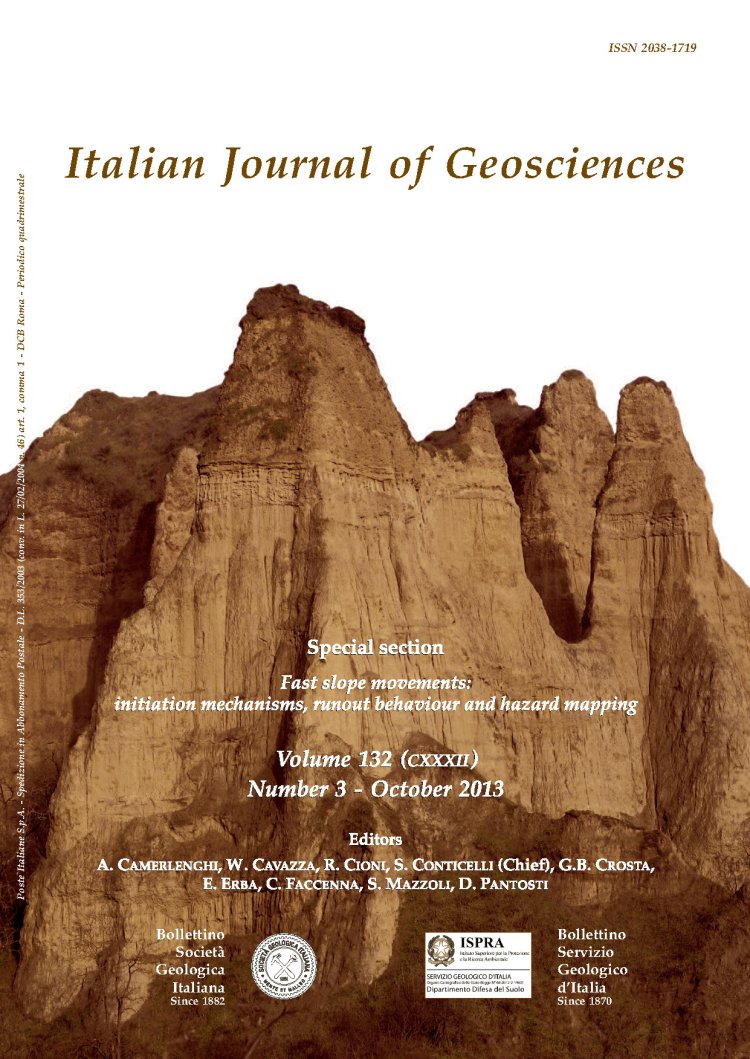
Debris avalanche, landslide initiation, dynamic modelling, Southern Italy.
Paola Revellino(*), Luigi Guerriero(*), Gerardo Grelle(*), Oldrich Hungr(**), Francesco Fiorillo(*), Libera Esposito(*) & Francesco M. Guadagno(*)
(*) Department of Sciences and Technologies, University of Sannio, via dei Mulini, 59/A - 82100 Benevento, Italy; Corresponding author: paola.revellino@unisannio.it; Tel +39(0824) 323636;
Fax +39(0824) 323623. (**) Department of Earth and Ocean Sciences, University of British Columbia, 6339 Stores Road, Vancouver, BC, V6T 1Z4, Canada.
DOI: https://doi.org/10.3301/IJG.2013.02
Volume: 132 (2013) f.3
Pages: 366-379
Abstract
Pyroclastic deposits covering most of the carbonate relief of the Campania Apennines are prone to develop frequent high-velocity flow instabilities. The present study investigates the debris avalanche that occurred at Nocera Inferiore (Campania Region, Southern Italy) on March 4, 2005 which claimed three casualties. The landslide involved the 1.5 to 2 m thick layered pyroclastic mantle which overlies the carbonate hill slopes. The slope movement initiated as a
debris slide, then producing a debris avalanche on the 40°-dipping open slope, which had never been affected by a landslide of the same type as the one that occurred. Landslide initiation is linked to a morphological change of the slope due to the building of a carriage path to be used as access for the nearby open quarry. Reconstructions
carried out on aerial and ground photographs of different dates highlighted that the road construction likely took place around 1998, increasing the landslide susceptibility at this location. The propagation characteristics of the landslide were modelled by using 2D and 3D dynamic codes (DAN-W and DAN 3D, respectively), in order to investigate the applicability of the 3D model with the rheological parameters of previous calibration of DAN-W in Campania Region.
Although, these analyses are well comparable with those implemented in the past, they highlight that it is unlikely to derive a unique set of values for the rheological parameters to be used on similar landslides over the entire region. Accuracy of back-analysis results strongly depends on the quality and availably of comparative input data, suggesting the need to improve calibration for each site within the region, enlarging information from similar cases and using statistical treatments.
Keywords
Get Full Text